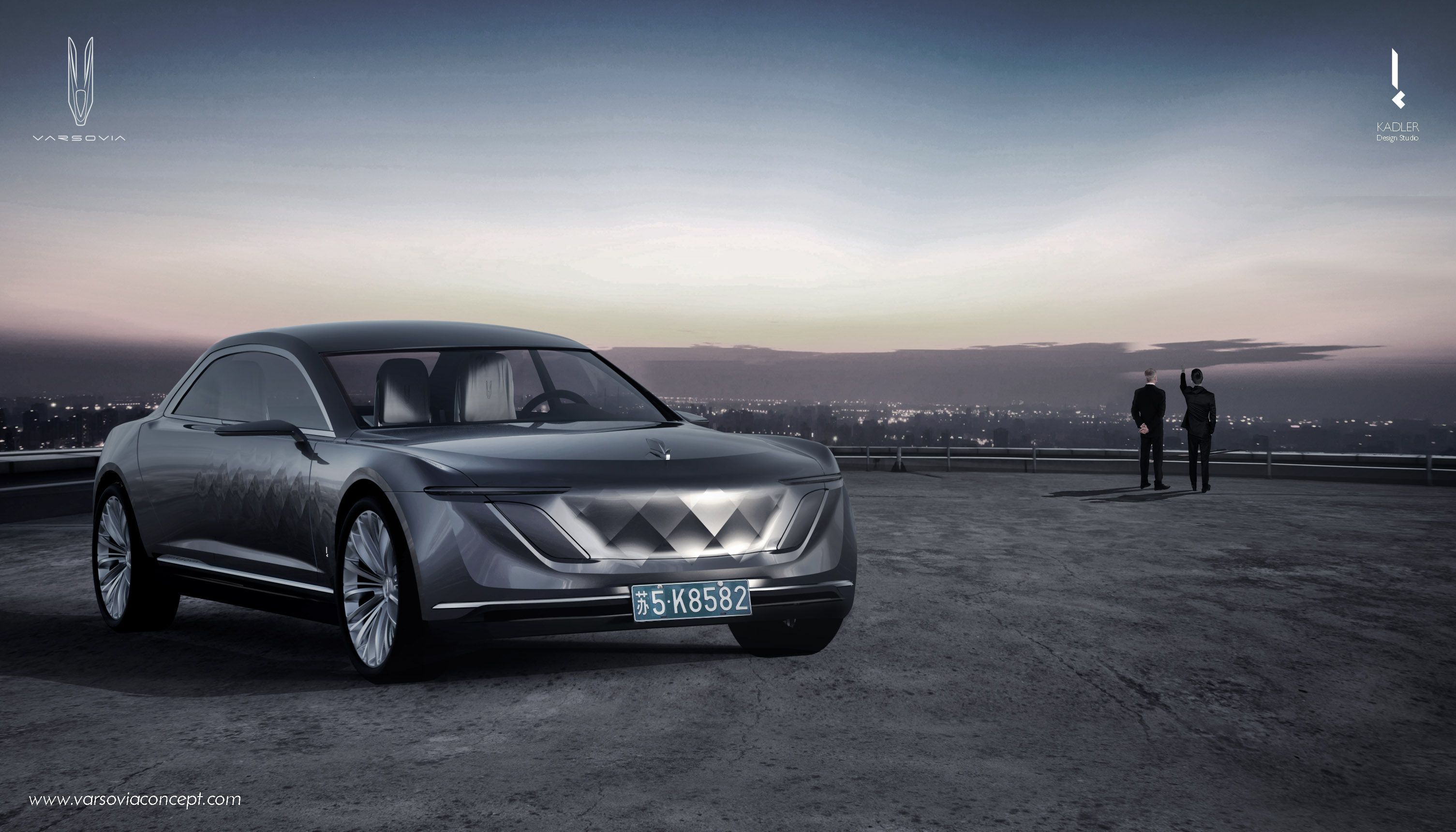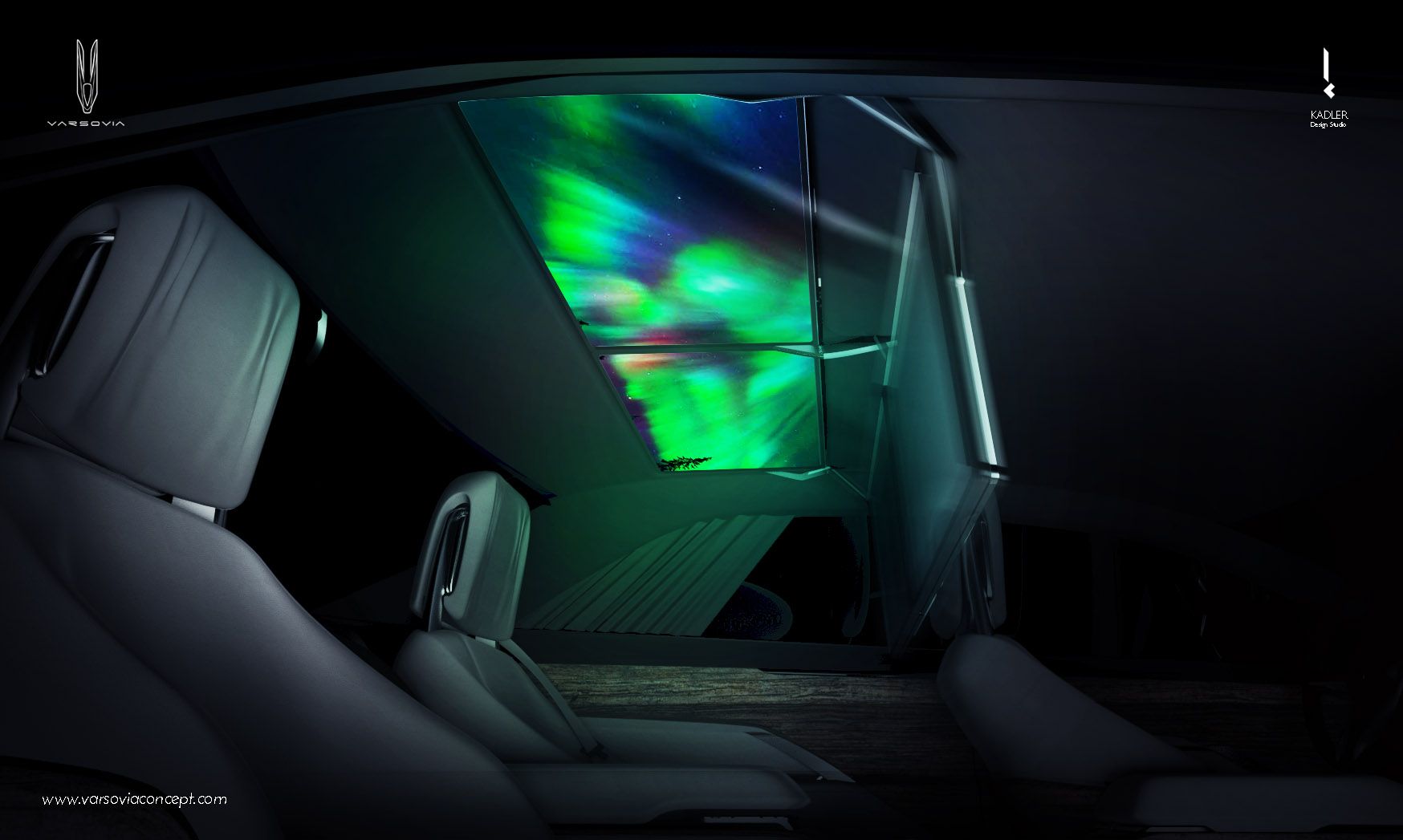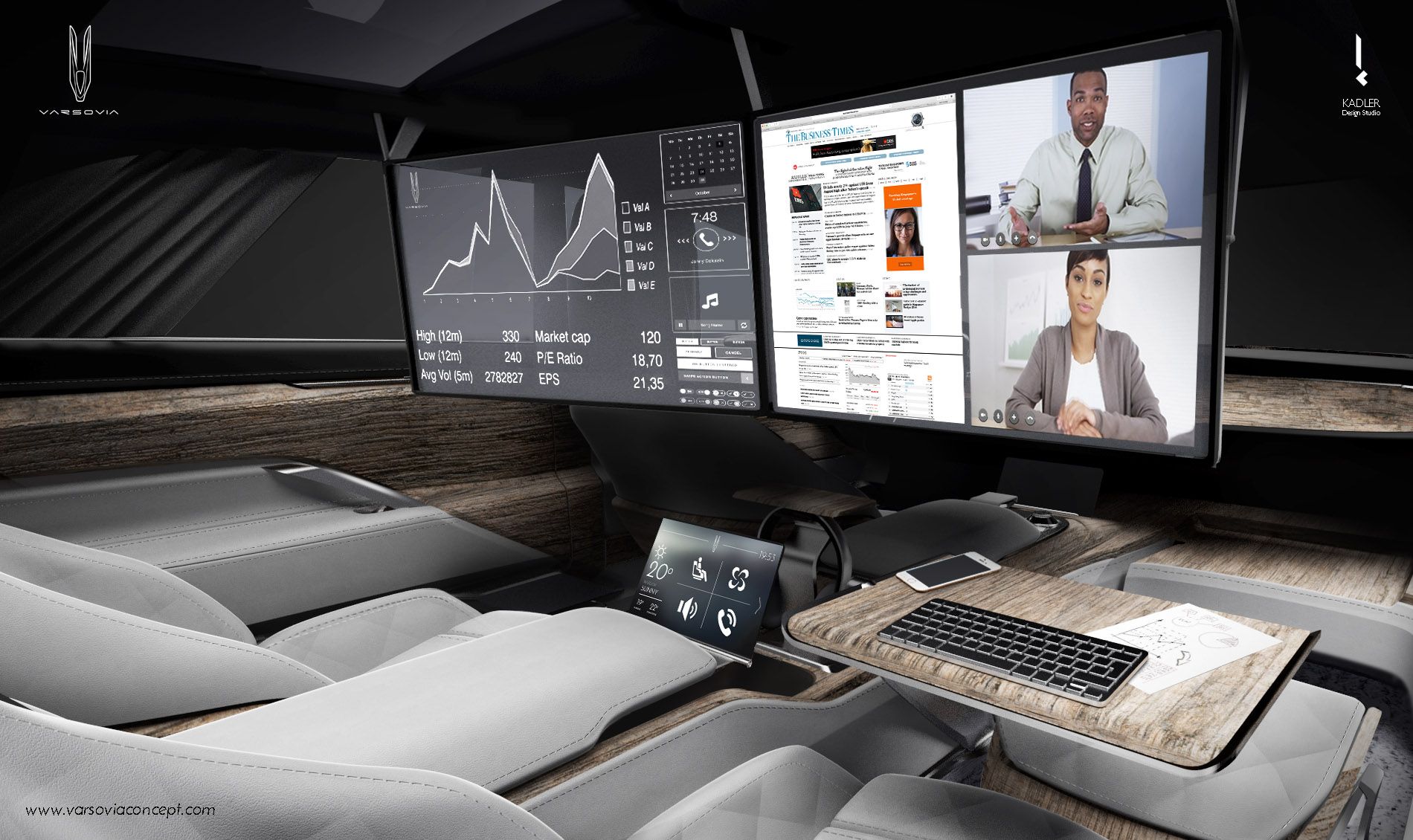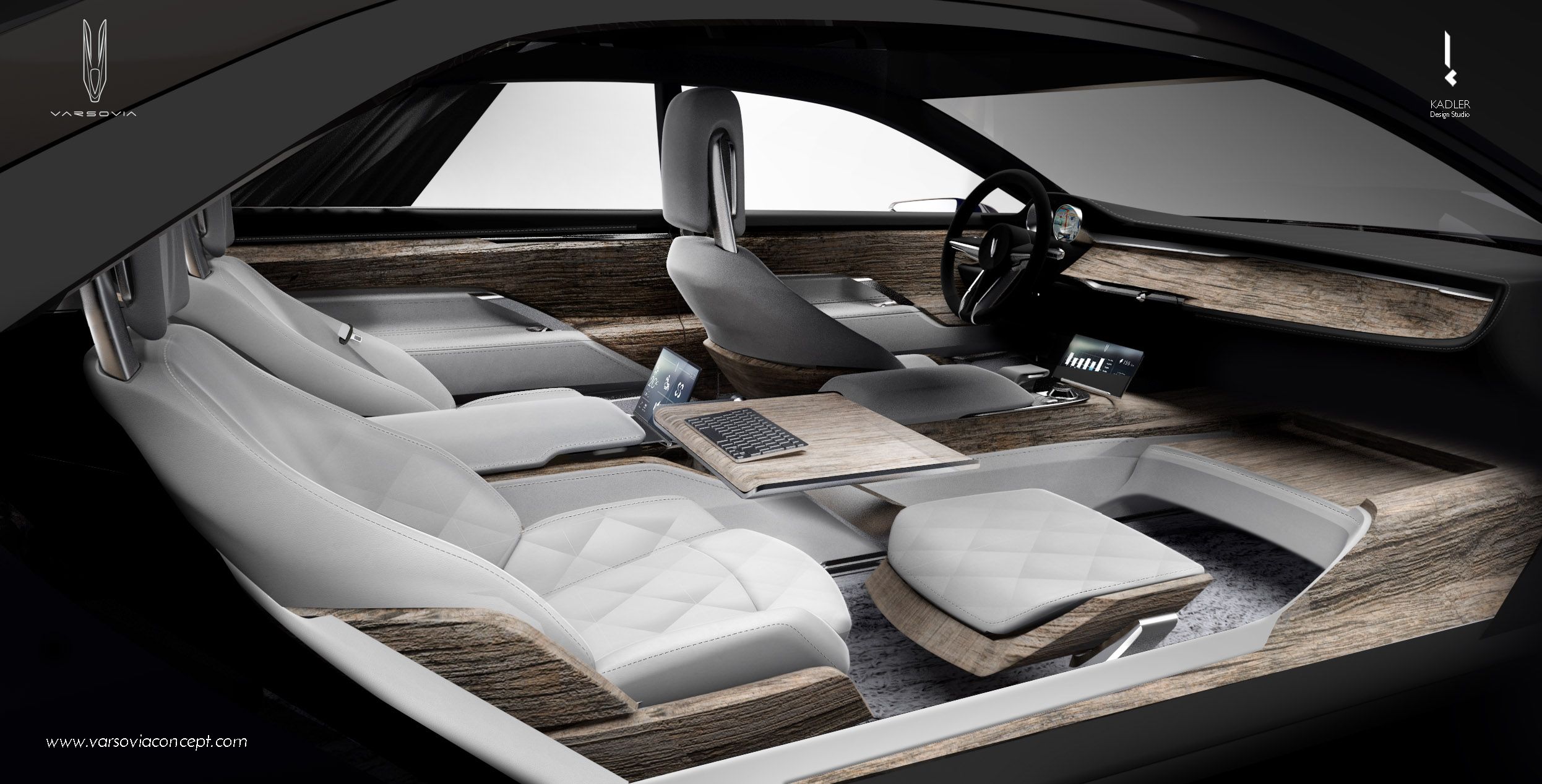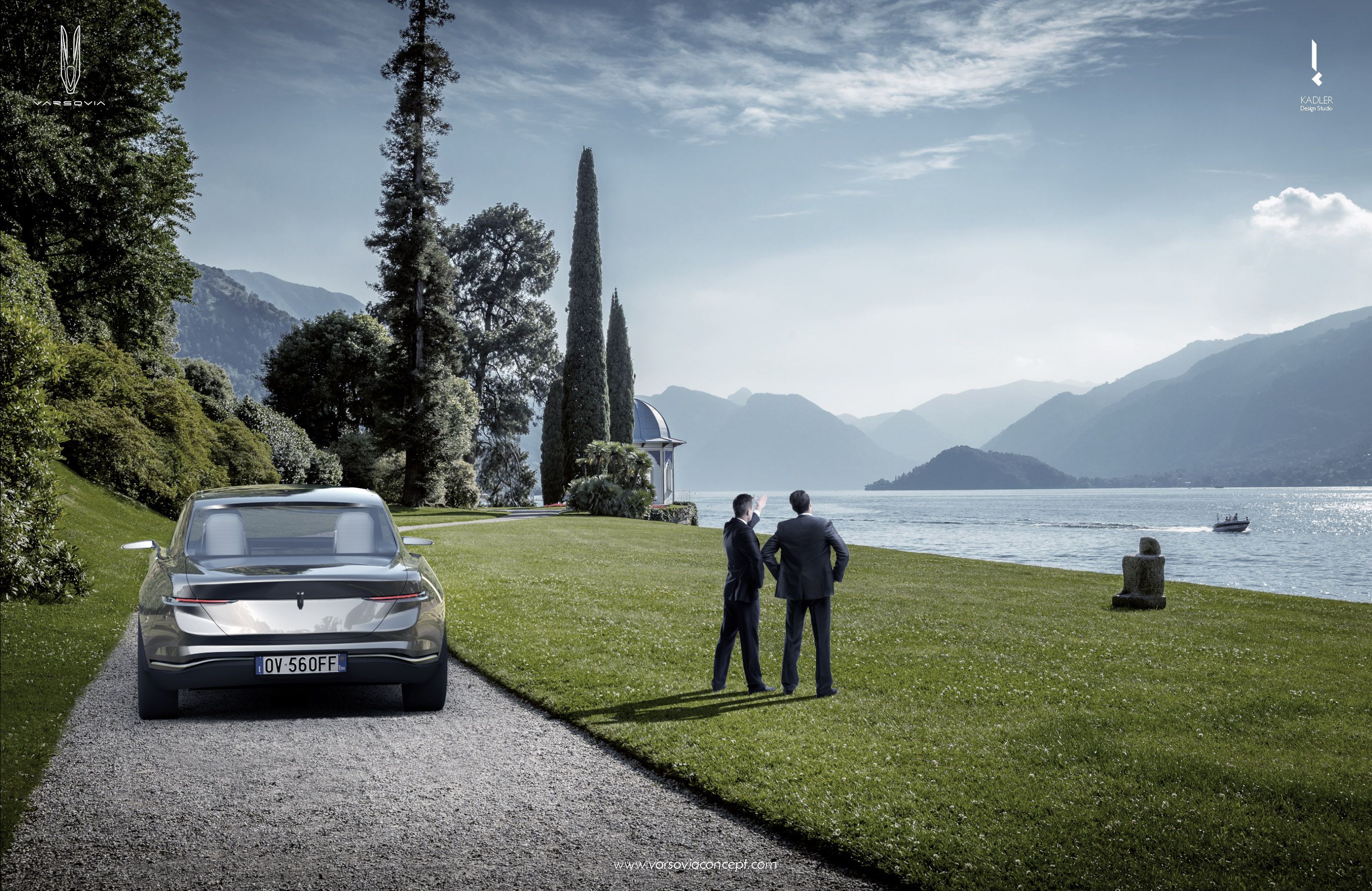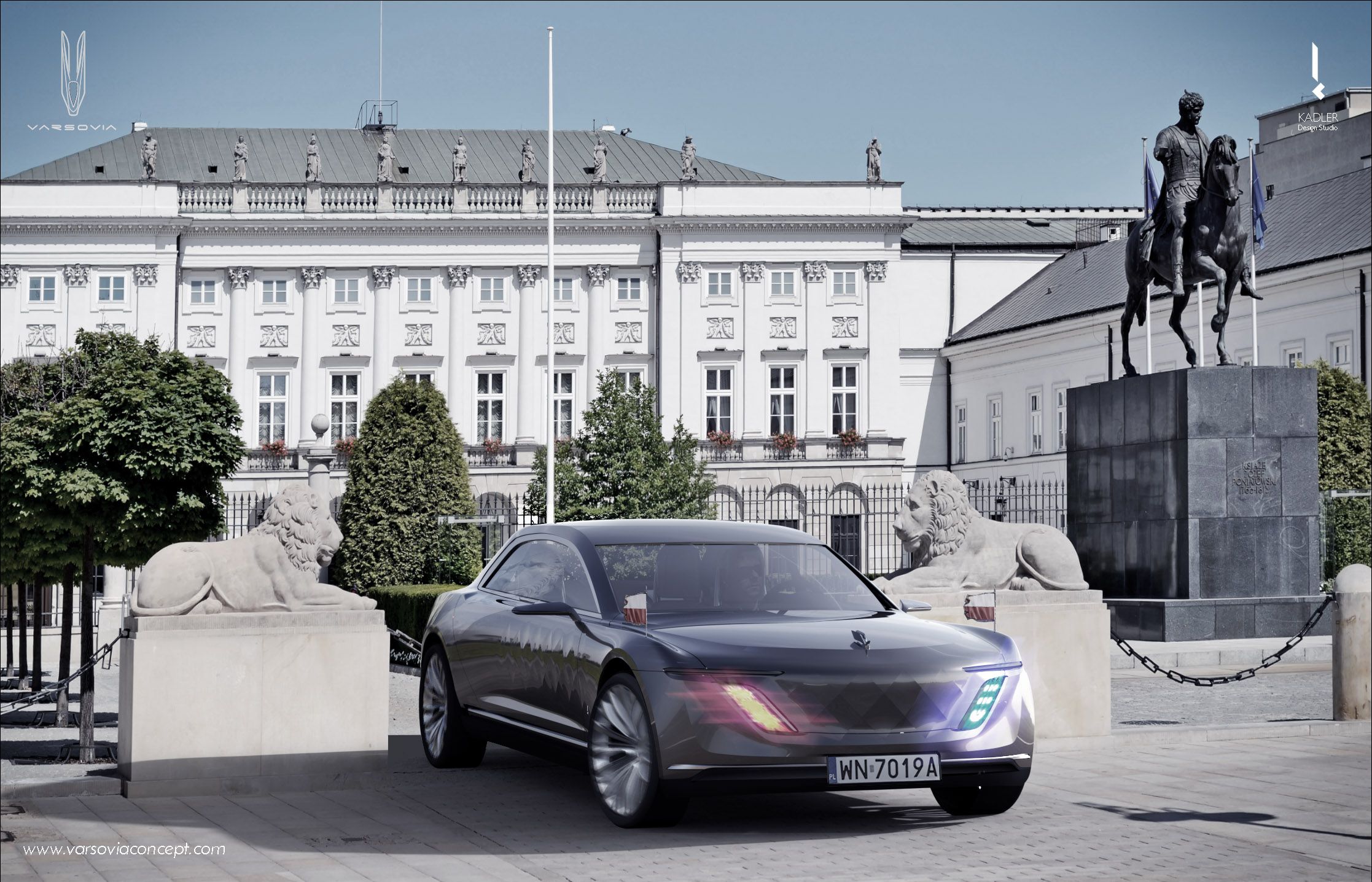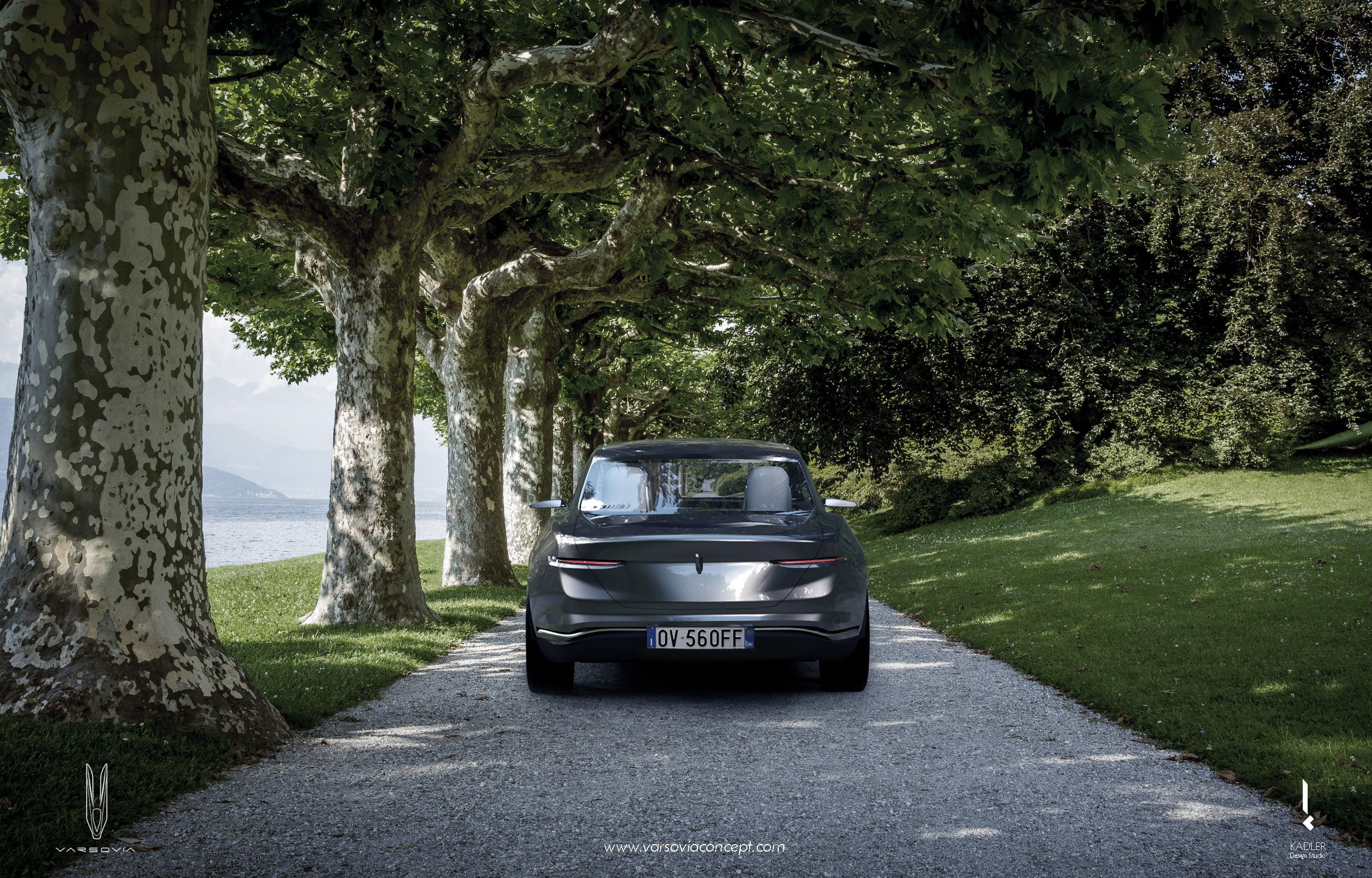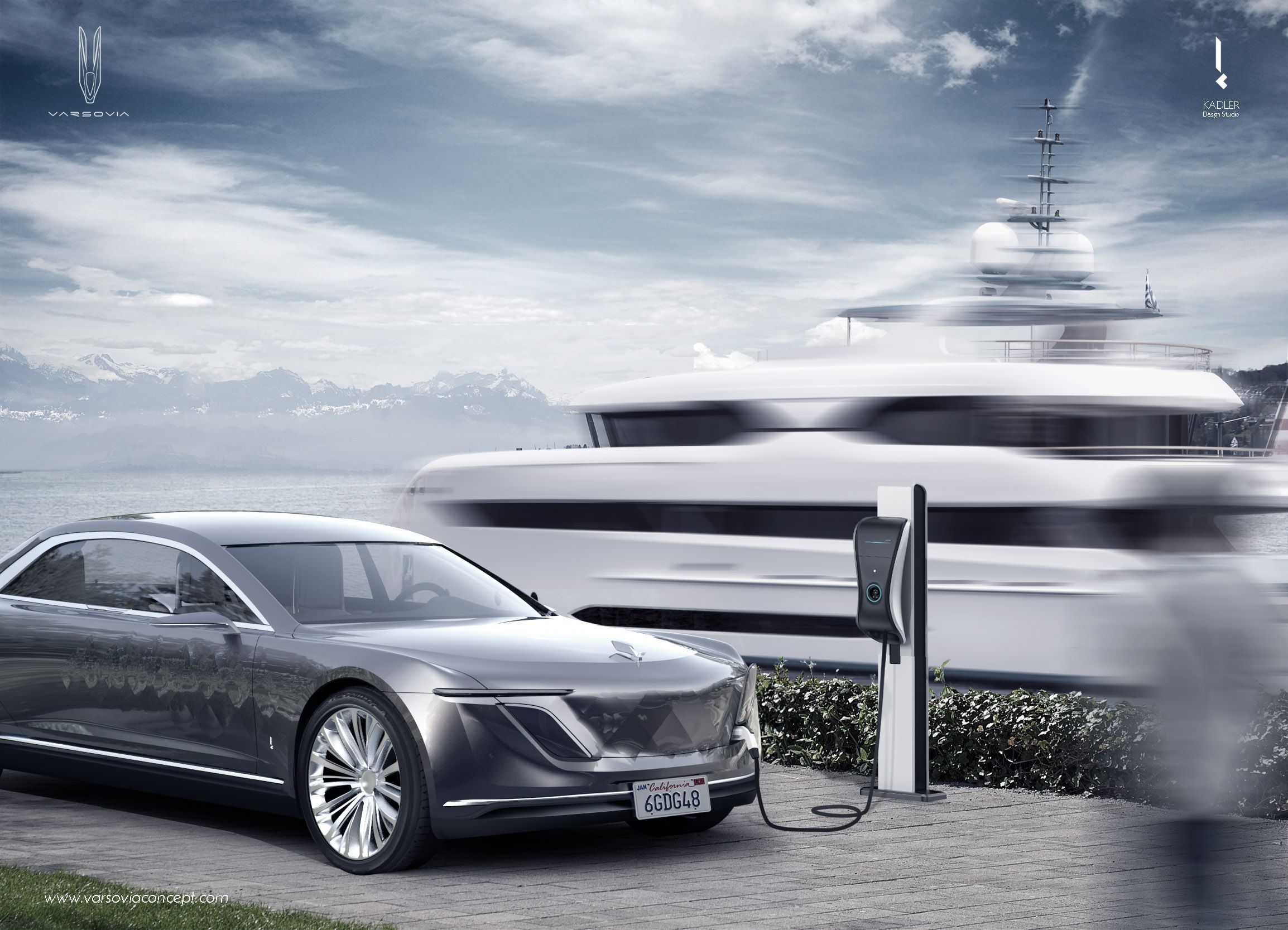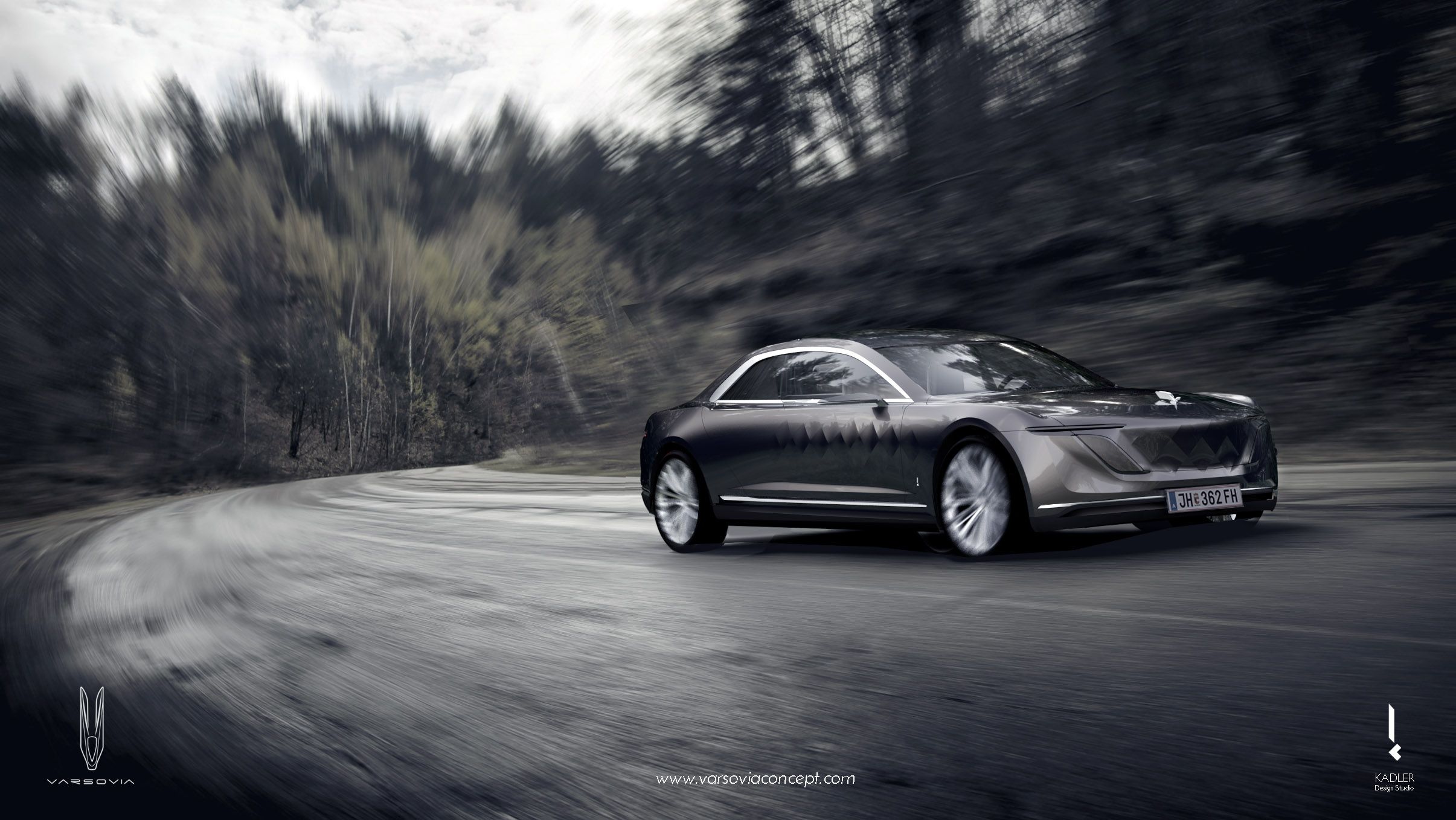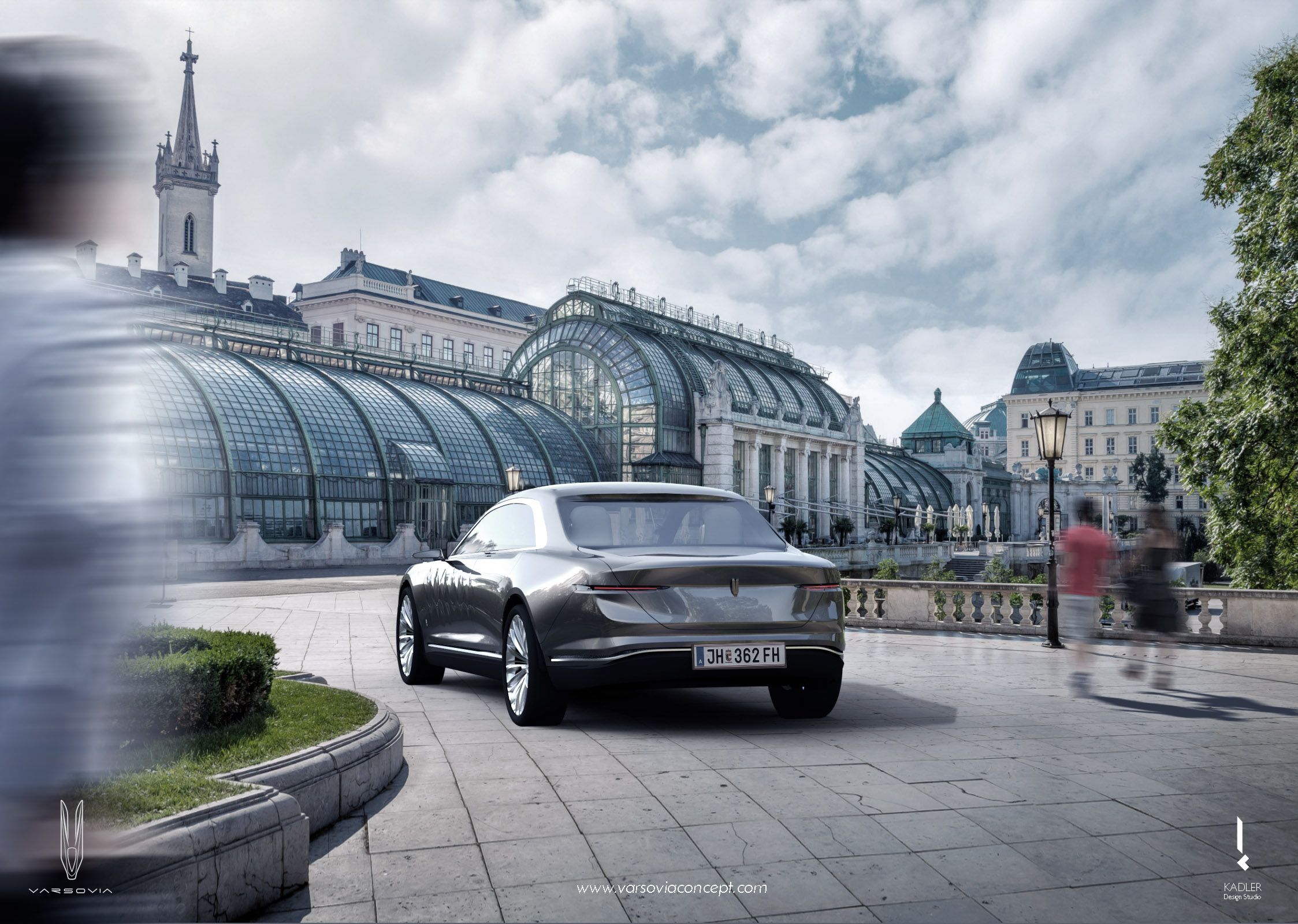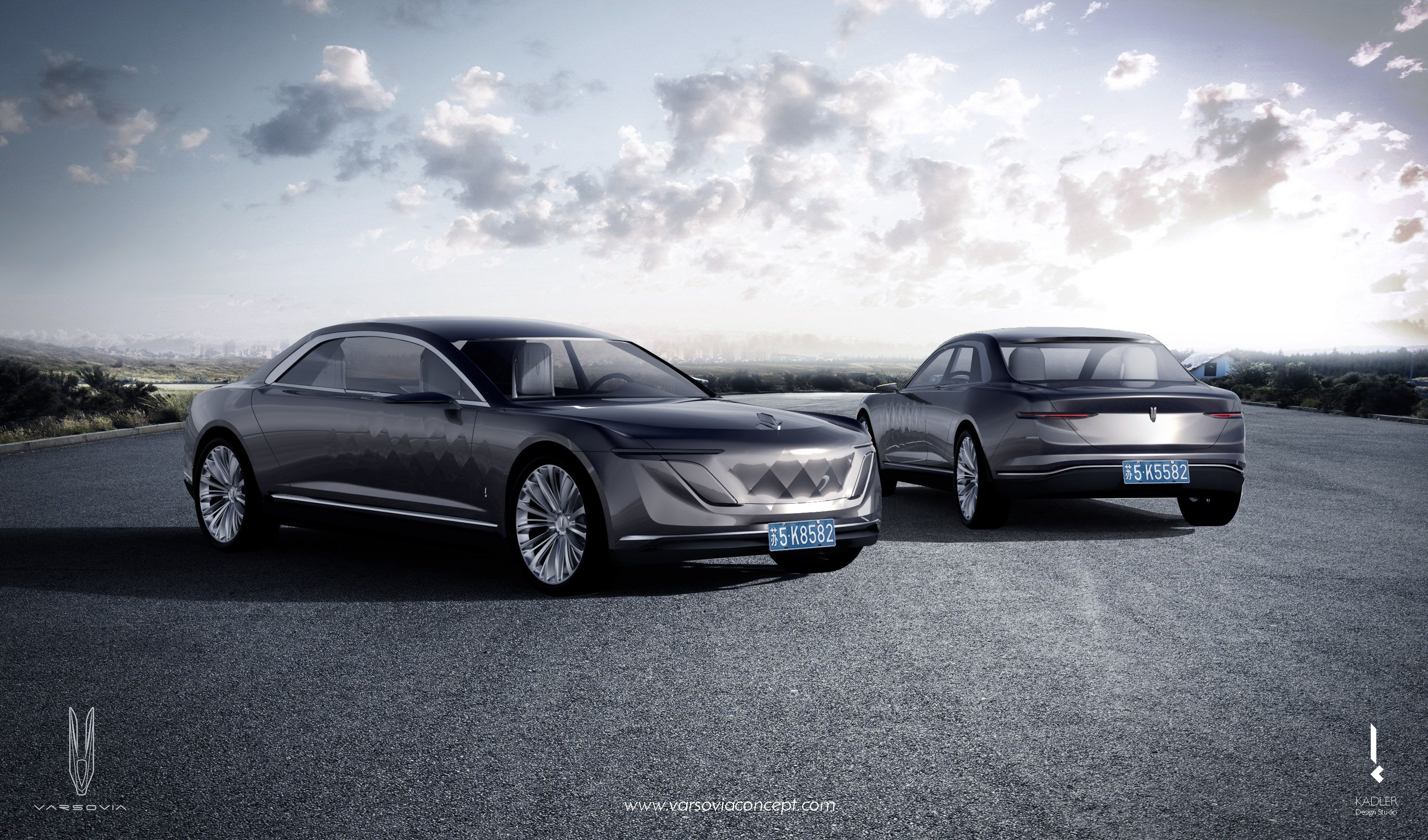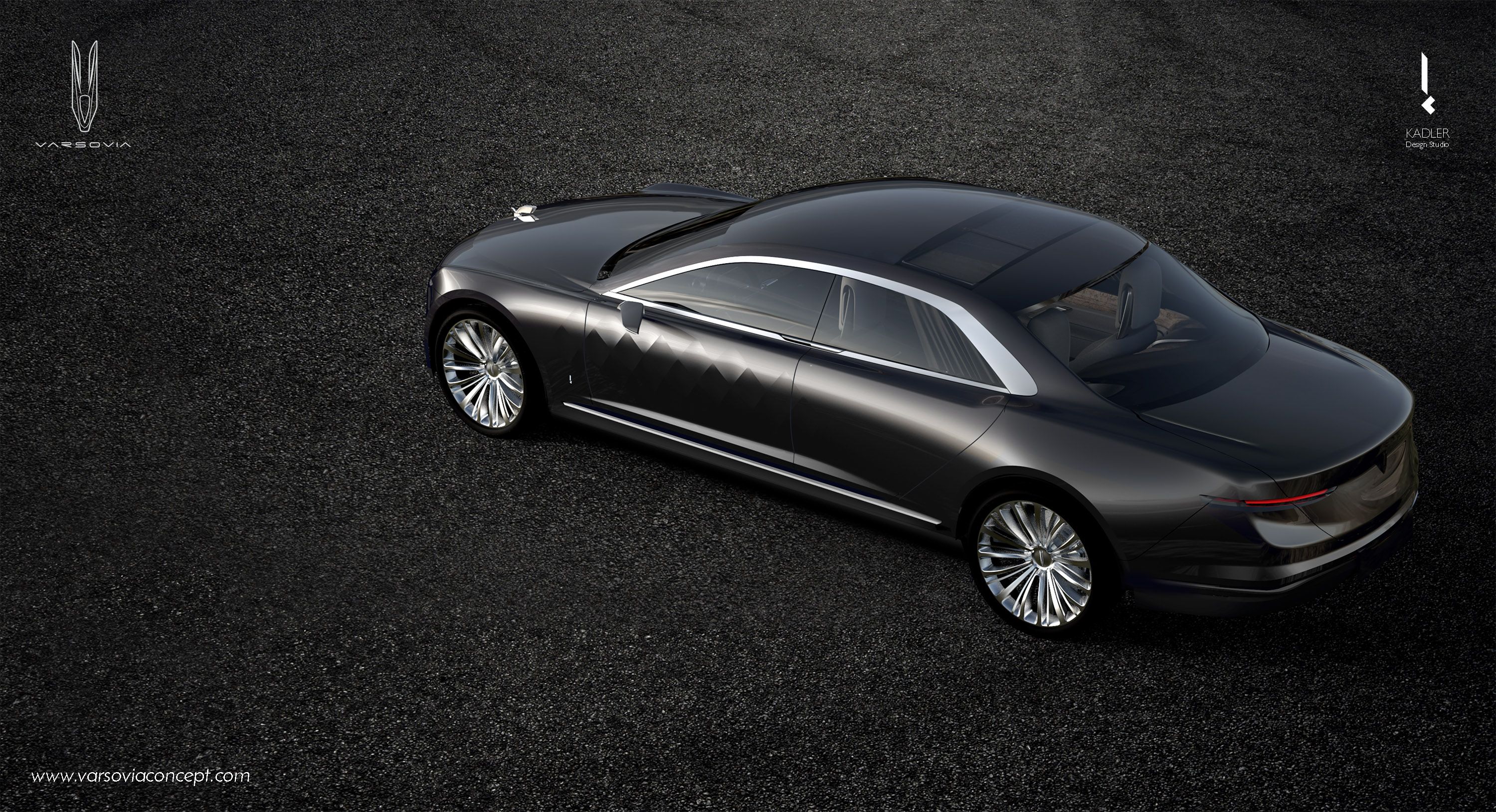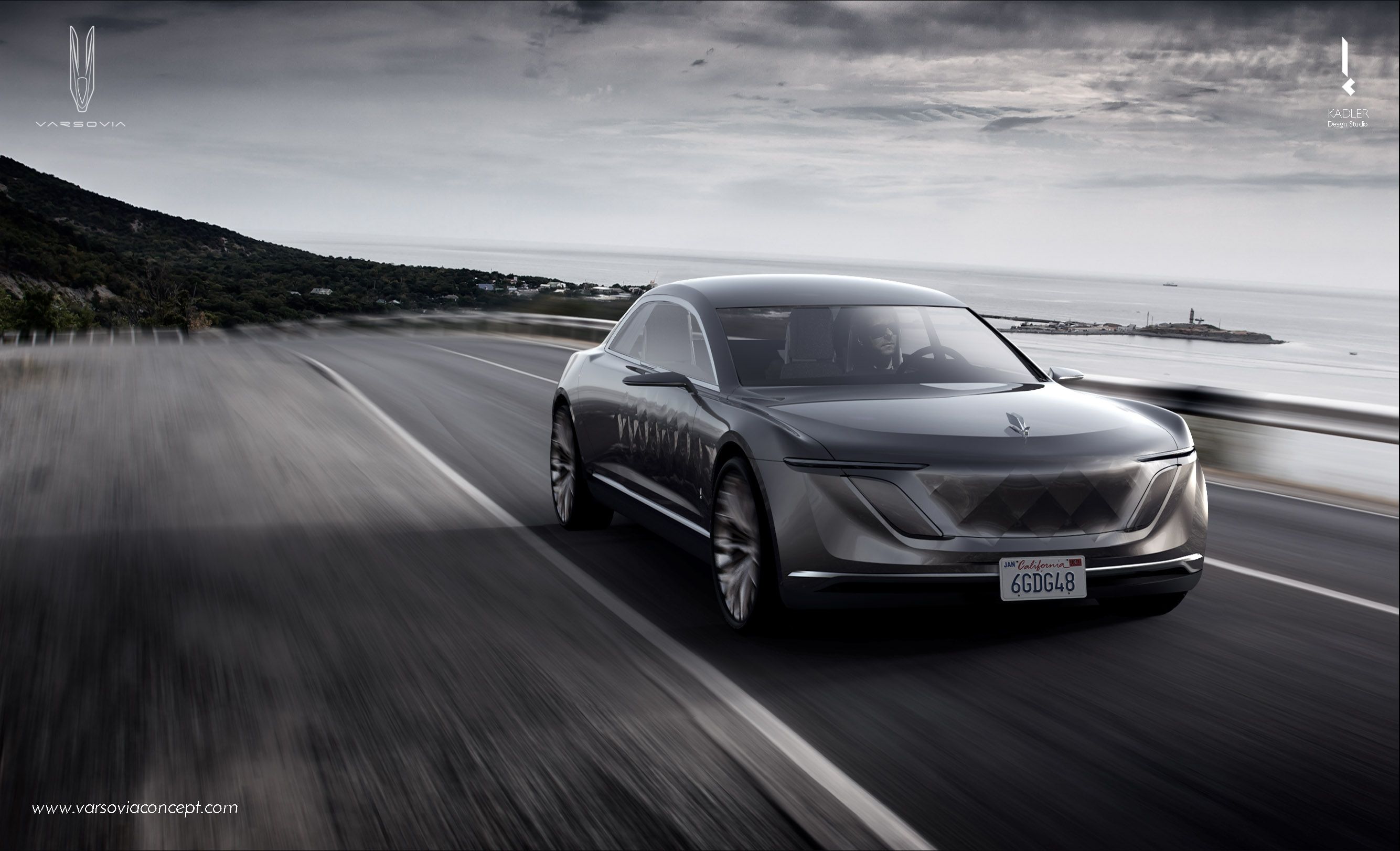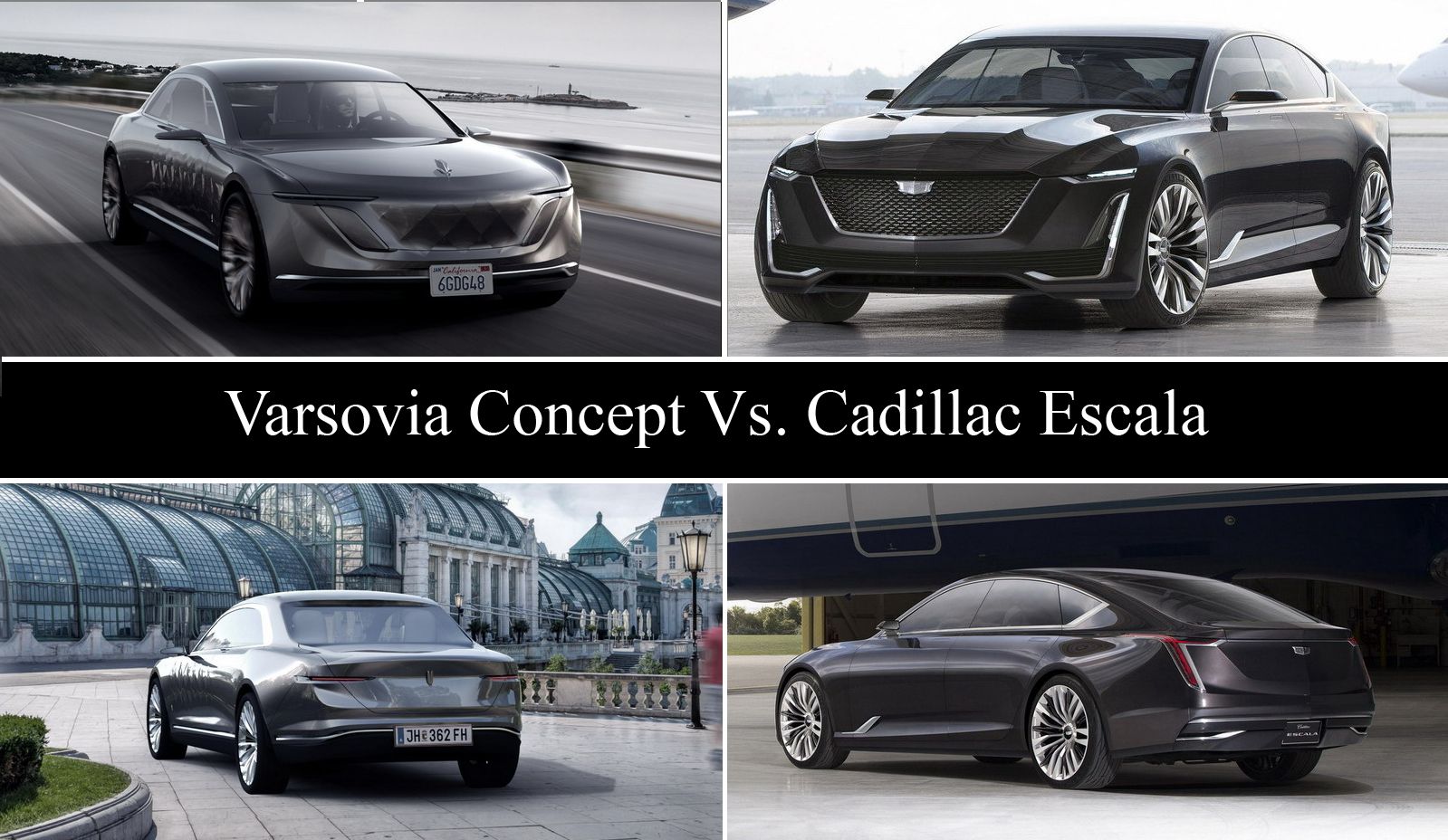If you’ve never heard of Varsovia Motor Company, it’s probably because the Polish automaker just announced its very first creation – the eponymous Varsovia Concept. Named after the city where it was designed (Varsovia is another name for Warsaw), this unique sedan offers a glimpse at what the automaker has planned for a future production model. Outside, you’ll find biodegradable composite body panels with an embossed diamond design, while inside is a slew of cutting-edge features that includes two enormous flat screens and passenger mood recognition, plus a good deal of luxury. Making it go is a hybrid drivetrain capable of propelling the vehicle to 60 mph in less than five seconds.
It all sounds quite nice, and Varsovia even says it’ll customize each example to the customer’s liking. But we’ve been burned before, and while this car talks a big game, it’s uncertain what it’ll offer when production ramps up in 2018. For now, though, read on for a breakdown of the concept’s crazy features.
Continue reading to learn more about the Varsovia Concept.
2016 Varsovia Concept
- Make: Array
- Model: 2016 Varsovia Concept
- [do not use] Vehicle Model: Array
Exterior
The Varsovia was designed at Kadler studio, located near Warsaw. The thought process behind the look was the pairing “minimalism and harmony” to connote the idea of “luxury and beauty.” The overall shape of the car is pretty traditional, with proportions that echo what a sedan is customarily supposed to look like. However, on top of this is laid a variety of futuristic elements that lend the Varsovia a unique appearance.
The most obvious feature is the embossed “scales,” which can be found in the grille-free nose and along the car’s flanks. These are meant to mimic the scales of Sawa’s tail, a mermaid that’s represented in the Warsaw coat of arms. Sawa’s likeness was also placed on the hood as an ornament.
Lighting ahead comes from thin strips in the fascia, while the rear uses equally thin strips for the taillights. Angled rectangular shapes on either side of the nose provide the DRL’s and turn signals.
The car is low and wide, with a roofline that dips down into a squared-off trunk. There are polished surrounds for the windows, and the shoulder line gives it all a nice, aggressive rake.
Varsovia says it’ll customize each example to whatever specification you need, including custom wheels, which is great if you’re not a fan of spoke-explosion rollers depicted in the rendering. Even more interesting is the offer to outfit the car with “the highest VIP B7 level standards” of armored protection, a perk usually reserved for models like the Audi A8 L Security or Mercedes S600 Guard. No word yet on how much this option costs, or how it affects the car’s performance, but I’d imagine the upgrade should include a good deal of extra power to overcome the added weight of the armor.
To my eye, the whole thing looks strikingly similar to the recently unveiled Cadillac Escala concept, albeit with a tweaked rear end that replaces the hatch-like Escala with a more traditional trunk. While the Varsovia doesn’t necessarily look bad, I don’t really think it looks that great, either. There’s just too much going on for my taste, and I have a hard time buying the whole “minimalism and harmony” line when there are embossed scales spread across the car’s profile. I bet there are a few folks out there who love it, but to me, the Varsovia is just too much of a try-hard to be considered a looker.
Side-by-side comparison
Interior
Inside, things improve dramatically. The car’s laid-back stance and straight lines carryover much more convincingly in the interior, where the seats and lines coalesce in an attractive cabin space that’s very much deserving of the phrase “high-end luxury automobile.”
One of the most immediately obvious features is the way the Varsovia arranges its seats. The car includes spots for a driver and two passengers, with the front passenger seat tossed in favor of a single “priority” seat in the rear. This unique layout basically provides oodles of room for one of the passengers to stretch out, including a footrest. Aiding ingress and egress, we find a large door that opens up, rather than out.
The layout isn’t technically innovative, but it does make novel use of the space, and to be perfectly frank, I’m a bit surprised it’s not commonplace amongst the ultra-high-end LWB luxury mobiles already present on the market.
Varsovia says its primary motivation was to “create an exclusive car, whose functionality and equipment clearly exceeded the offer of other producers.” As such, that handsome interior comes with a multitude of features that make it an ideal location for work or to unwind.
Upping the car’s mobile-office usability is an advanced audio-video system that integrates with the user’s various mobile devices and laptop computers. Once set up, the Varsovia will allow you to immediately resume whatever task you were working on as soon as you sit down, without even taking out your devices. There’s a self-stabilizing table, and a built-in keyboard/mouse combo, plus a detachable tablet that acts like a big remote control for the car’s various information and comfort systems. A satellite-based web connection is included.
Providing the visuals are two 19-inch flat screen displays. These units actually swing up into the roof when they’re not needed, providing a view of the sky thanks to their near-transparent appearance. Alternatively, they can be used to put on a roof-based light show, if the mood is right. Squeezed together, they provide a 38-inch panoramic screen for whatever you need to display – be it for work, or pleasure.
Speaking of which, the car also comes with an “extended spa system” that promises nine different ways to adjust the seat, including heating and cooling, massage settings, and firmness. The seat also uses sensors to self-adapt to the passenger’s unique physique.
Now for the weird stuff. The Varsovia supposedly comes with the ability to monitor the passenger’s emotional state, employing cameras and sensors to detect things like heart rate, thus determining whether the passenger is tired or excited. Based on these readings, the car will automatically pick out the most appropriate music selection, interior lighting levels, and seat firmness settings.
Believe it or not, this isn’t the first time we’ve heard about a vehicle that can read your mood. The Toyota FV2 concept is another example, and the Hyundai Project Ioniq Lab just outlined such a technology in a recent statement about upcoming “megatrends.”
As for the materials, the Varsovia will use all the usual suspects in the luxury segment – wood, leather, and aluminum will all be present. Silver and other minerals will also be used. The Polish automaker also says it won’t use any plastic whatsoever, which won’t just up the perceived quality, but also supposedly supports the car’s eco-friendliness. No word yet on how the wood, leather, and aluminum are obtained, but in order to retain its eco-credibility, it’s gonna need to be sustainable on all counts.
The seats use an embossed pattern similar to the “scales” seen in the exterior, and they come as well-cushioned buckets with a surprising amount of lateral bolstering.
A few other interesting features are the presence of a variety of “antiseptic” materials on areas that “have the most contact with passengers’ hands,” supposedly to help reduce the spread of bacteria and other nastiness. It sort of reminds me of Tesla’s “Bio-Weapon Defense Mode,” albeit a bit more abstract. The carpet and leather upholstery will also be hydrophobic to stop “dirt from settling.”
Beyond all this, each customer will be able to specify whatever equipment he or she may want, from the materials, to the information systems.
Drivetrain
Pairing high-end luxury with eco-mindedness isn’t always a happy marriage, but the Varsovia Concept tries anyway.
Motivation comes from a hybrid powerplant, which is arranged in series with forward momentum coming directly from an unspecified number of electric motors. Providing extra electricity is a “small” internal combustion engine (ICE), which acts like a generator for the electric drive units. The batteries are located inside the floor, making max room in the cabin.
This set-up provides the best of both worlds – all-electric torque, silent running, and zero local emissions, plus the range and assurance of an ICE when called on.
Varsovia was actually so bold as to provide a few numbers with this hypothetical poweprlant – up to 350 km (217 miles) on electric power alone, plus an extra 500 km (311 miles) when burning the dino fuel, making for an 850-km (528-mile) range with a tank full of gas and battery pack full of electricity.
That’s huge, especially when you consider how the top dog Tesla Model S gets roughly just 300 miles per charge. Which begs the question – how does Varsovia plan on getting so much range?
We’ll see what happens when this car hits production (or maybe I should say if it hits production), but here’s another number that leaves me doubtful – 0-to-100 km (62 mph) in less than 5 seconds. That’s mighty quick for any passenger car, let alone a hybrid luxury car with oodles of equipment onboard (check the section below for the supposed curb weight). That said, the car’s claimed top speed of 200 km/h (124 mph) seems much more reasonable.
Chassis And Handling
Varsovia says that weight was a serious concern, and rightfully so considering the car’s goals in terms of range and performance. To keep it as feathery as possible, the exterior body panels and even part of the construction are made from a composite material.
However, it’s not the composite you’re thinking of – rather, in keeping with the car’s eco-friendly attitude, the Varsovia uses “natural, biodegradable fibers.” What exactly these fibers are made from has yet to be determined, but I’m not exactly convinced I would want to drive a car with biodegradable construction. Just sayin’.
Whatever it’s made from, the car supposedly weighs just over 2,000 kg (4,409 pounds), which is a lot, but even that number seems a bit off when you consider just how much stuff this car brings to the table (I’d expect something closer to 5,000 pounds).
Prices
Varsovia says a full-size prototype of its car is on the way, with plans to drop the sheets at an unspecified international auto show sometime in the near future. The Paris Motor Show would be the next event on the list, but odds are the carmaker won’t have something ready by the time that show gets underway in October.
After it debuts, production variants of the Varsovia will begin to roll out sometime in 2018, with production capped at no more than 50 cars per year. Varsovia says each unit produced will “literally be one of a kind” thanks to the level of customization offered.
Should it actually hit production, odds are good this thing will come to the U.S., especially when you consider the automaker’s website uses a U.S. flag to designate English-language settings, and several of the rendered photos incorporate California license plates.
So how much will it cost? Even if this thing delivers half of what it promises, I couldn’t see it selling for less than $200,000 a pop. Throw in extra for the bespoke equipment, and you’re looking at something around a quarter million bucks.
Competition
Mercedes-Maybach S600
Recently dusting off the Maybach nameplate, Mercedes unveiled the S600 limo with a huge rear cabin space, a 523-horsepower V-12 engine, and enough presence to turn heads in all but the most elite circles.
Read our full review on the Mercedes-Maybach S600 here.
Rolls-Royce Ghost Series II
Here’s another V-12 powered sedan for the lavishly wealthy. Both a SWB and LWB version are offered, and inside the palatial cabin, you get all the tech you’d need to take care of business.
Read more about the Rolls-Royce Ghost Series II here.
Bentley Flying Spur
While a bit more understated compared to its V-12 brethren, the V-8 Flying Spur gets a little extra eco-friendliness thanks to 24 mpg on the highway. The rest of it, however, is still worthy of the $200,000 price tag.
Find out more about the Bentley Flying Spur here.
Conclusion
First things first – I like the enthusiasm Varsovia is showing with this concept. I like a lot of the ideas they’re throwing at this thing, and I’m eager to see what sticks.
Here’s the problem – there are just too many cool ideas at play here. It’s like the top brass reviewed all the high-end luxury models already out there (both production variants and concepts), and promptly stole the most attention-grabbing ideas for the Varsovia.
Armor plating optional? Green sensibilities? Over 200 miles on electric power, plus a gas extender? Five seconds to 60 mph? Mood-sensing cabin technology?
Here’s the thing about the auto industry – if it sounds too good to be true, it probably is. If the automaker provided more specifics (horsepower? ICE displacement? Battery?), I’d have an easier time accepting this thing as bound for production, but as is, it’s more of a wish list than a feature list.
There’s another problem. These kinds of cars are sold almost as much on brand recognition and social perception as they are features and quality, and I’m not convinced anyone with 200 hundred grand to blow would look to Poland for their ride.
No offense, of course (shout out to Arrinera and the Hussarya), I’m just saying these cars are about status, and the Varsovia has yet to collect the clout needed to turn heads.
But hey – if this thing really does deliver on its promises, the clout should flow like water.

